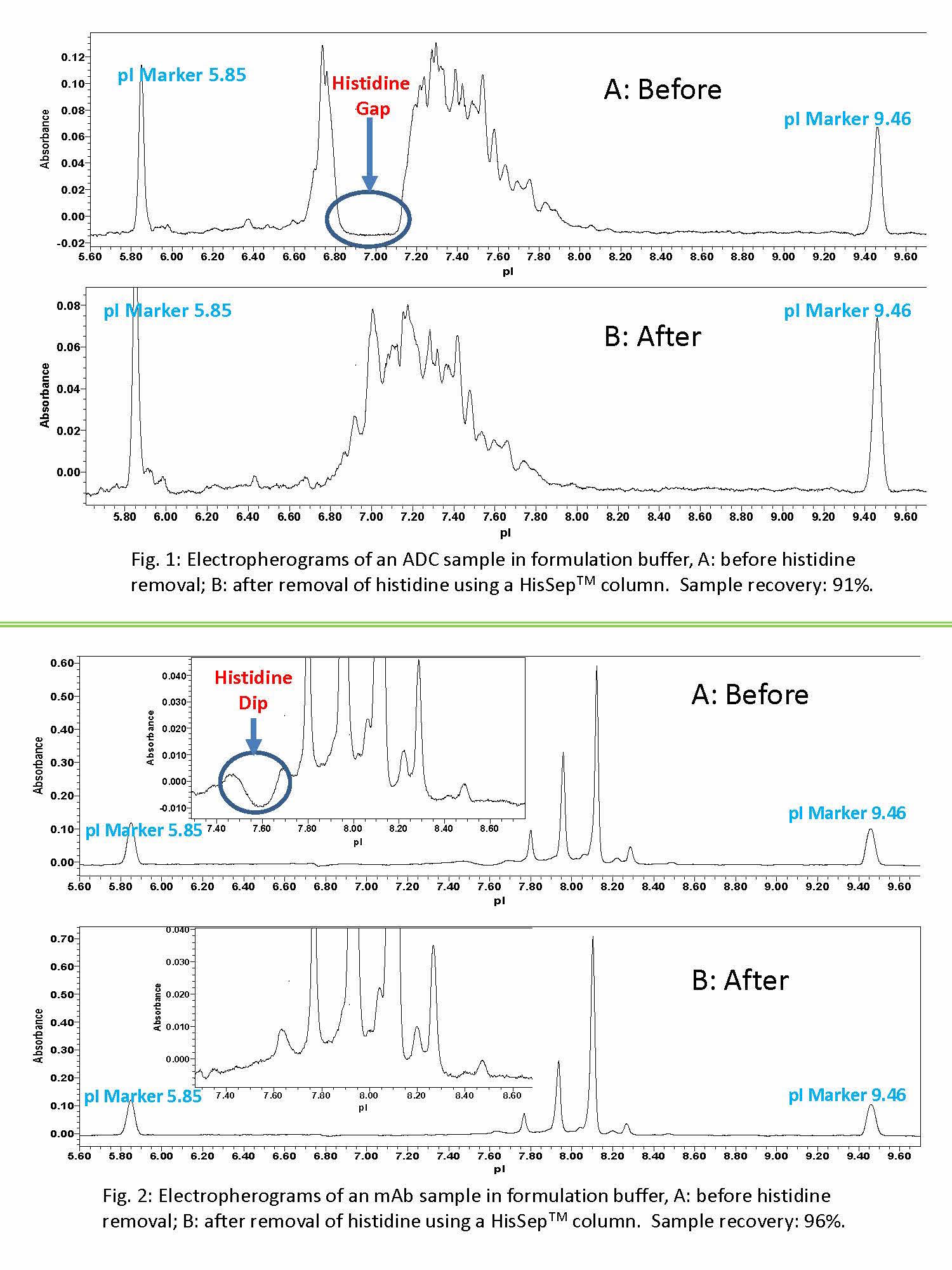

|
Capacity |
Volume |
|
|
| BioPureSPN Mini™ SPE |
|
|
|
| BioPureSPN MIDI™ SPE |
|
|
|
| BioPureSPN MACRO™ SPE |
|
|
|
| 96-Well MINI BioPureSPN Plate |
|
|
|
| 96-Well MIDI BioPureSPN Plate |
|
|
|
| 96-Well MACRO BioPureSPN Plate |
|
|
|
|
|
|
|
|
| ConSep™ mAb Conc & Buffer Exchg |
|
|
|
| HisSep™ Histidine Rmvl Col |
|
|
|
| PAGE*Eraser™ microFilter Columns |
|
|
|
Additionally, specific application materials like HILIC for detergent removal, HIL-SCX for post ICAT sample prep, ERLIC-WAX Phosphopeptide Enrichment are available from PolyLC® Inc., and TARGA® C18 for desalting of phosphopeptides and carbohydrates using 100% water loading conditions from Higgins Analytical® Inc.. Empty columns are available so your proprietary packings materials can be used in this format.
PAGE*Eraser™ microFilter Spin Columns remove particulates from samples from in-gel digests to prolong capillary LC-MS column life.
Care must be taken to limit the number of cycles of sample solvent loading, since elution of sample can occur when more than seven bed volumes are employed for loading and wash. Additionally, the rate of solvent loading and elution will affect the ability of one's sample to diffuse onto or off of the bed. For these reasons, we prefer the use of BioPureSPE columns rather than Tips.
Detergent Removal: Use HILIC BioPureSPN columns for complete detergent removal.
Histidine Removal: Use HisSep™ Spin columns from ID Biologics replace membrane techniques for complete histidine removal from antibody formulations. HisSep™ columns increase the accuracy of assays by removing the interference of histidine in amino acid or icIEF electrophoretic assays.
Volume Dependent Results for Salt Removal by SEC:

Increased Accuracy of Antibody Assays After Histidine Removal
|
Void Volume |
Volume |
Efficiency |
|
| 96-Well MacroSpin Plate |
|
|
|
|
|
|
|
|
|
|
|
|
Desorption increases with an excess of sample loading volume and/or wash volume. The maximum loading volume is one chromatographic void volume (ca. 60% of the bed volume) less than the k' of the analyte of interest. Increased loading can be obtained by either selecting a more retentive solvent condition or from a more retentive column chemistry such as TARGA C18, which allows loading in 100% water and which could even retain (for a few column volumes) underivatized simple sugars.
_TARGA_300ux30mm_trap.jpg)
Effect of excessive loading and wash volumes on SPE Tips or Trap Columns
Data, courtesy of Brian Hampton, University of Maryland, generated from a trapping experiment on a 0.3 x 30mm, TARGA C18, capillary trap. Various volumes of sample in 0.1% formic acid loaded onto a trap column equilibrated with 0.1% formic acid.
Back to Top of Page
Last Updated: 04/02/25